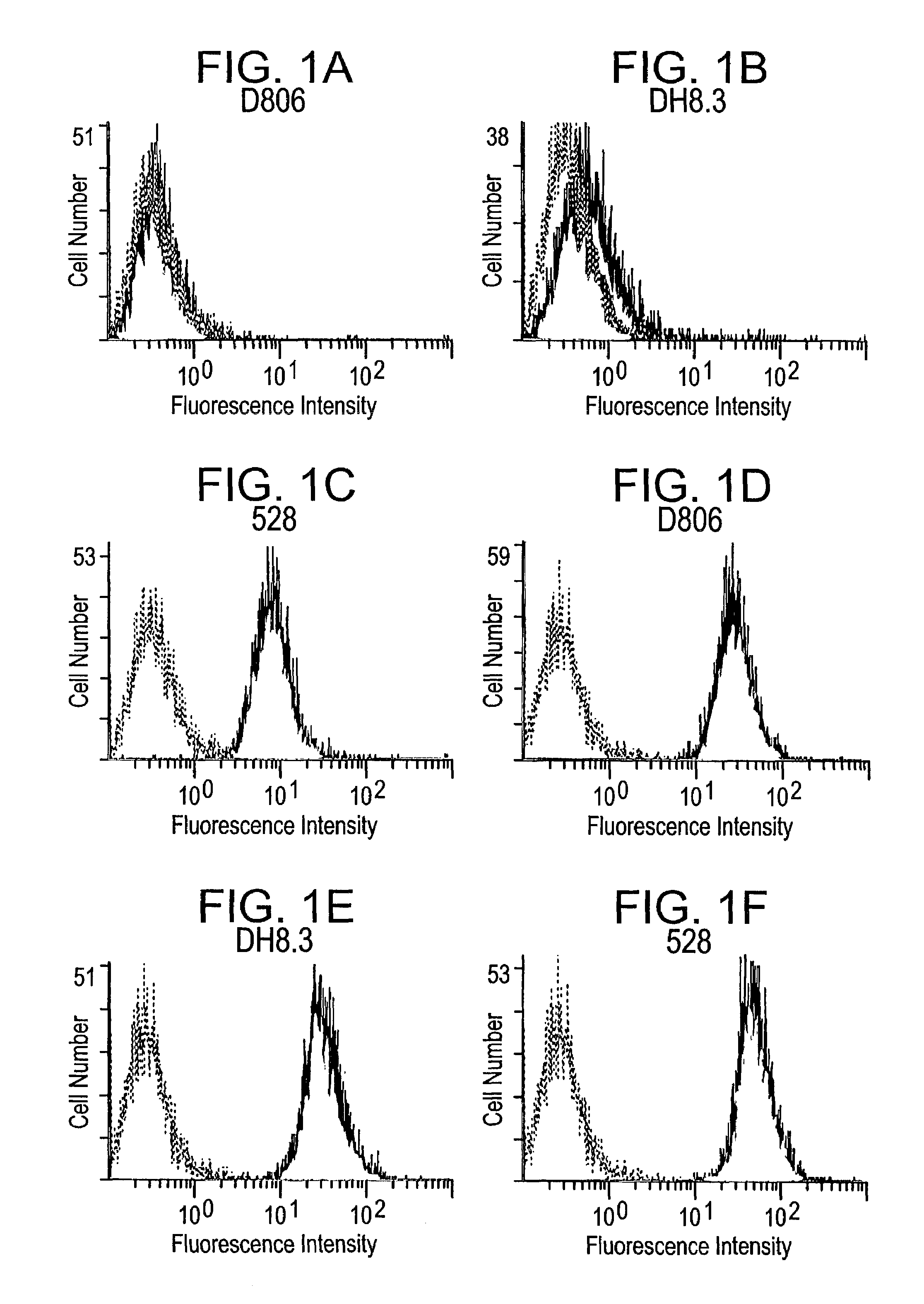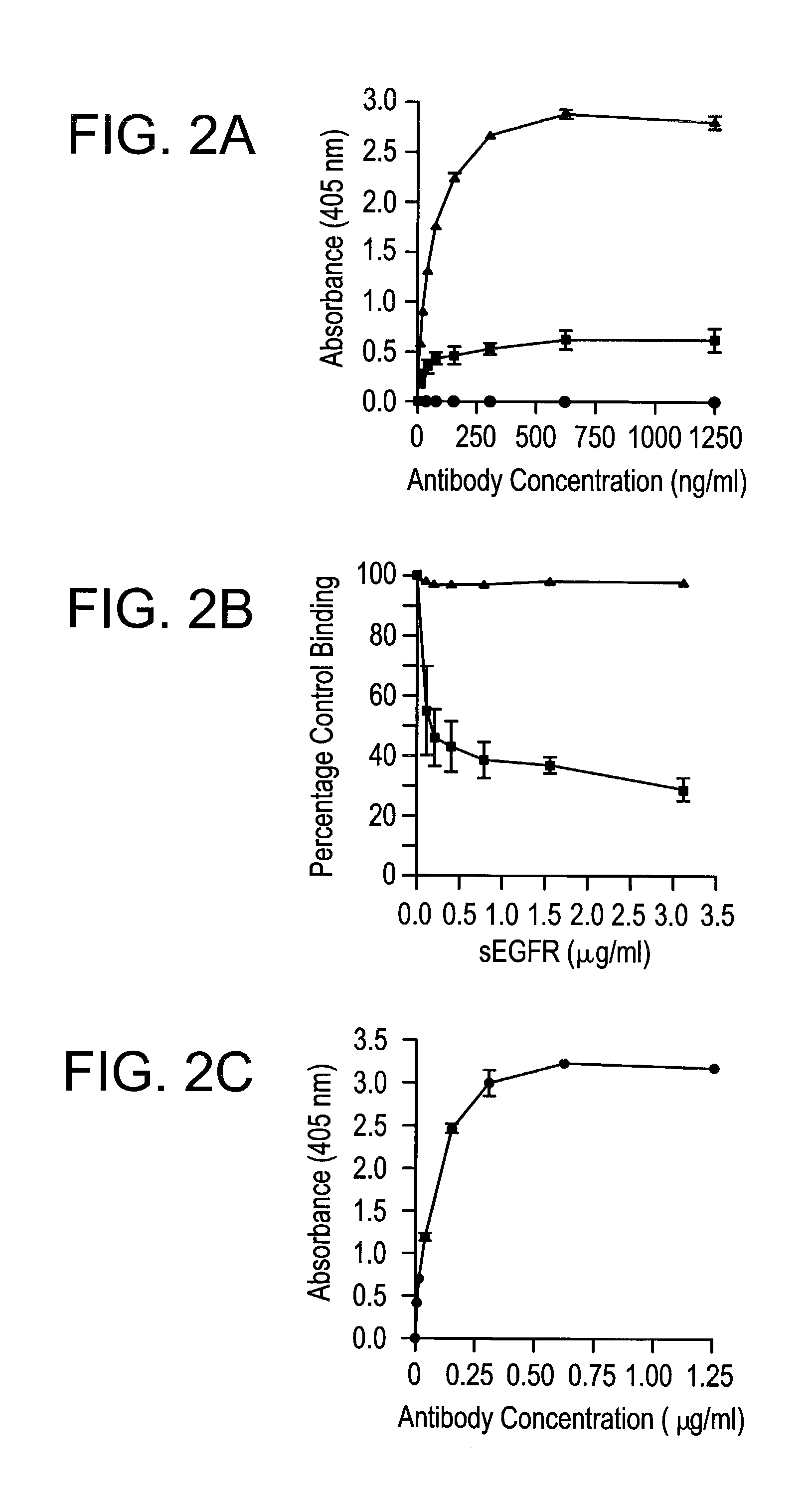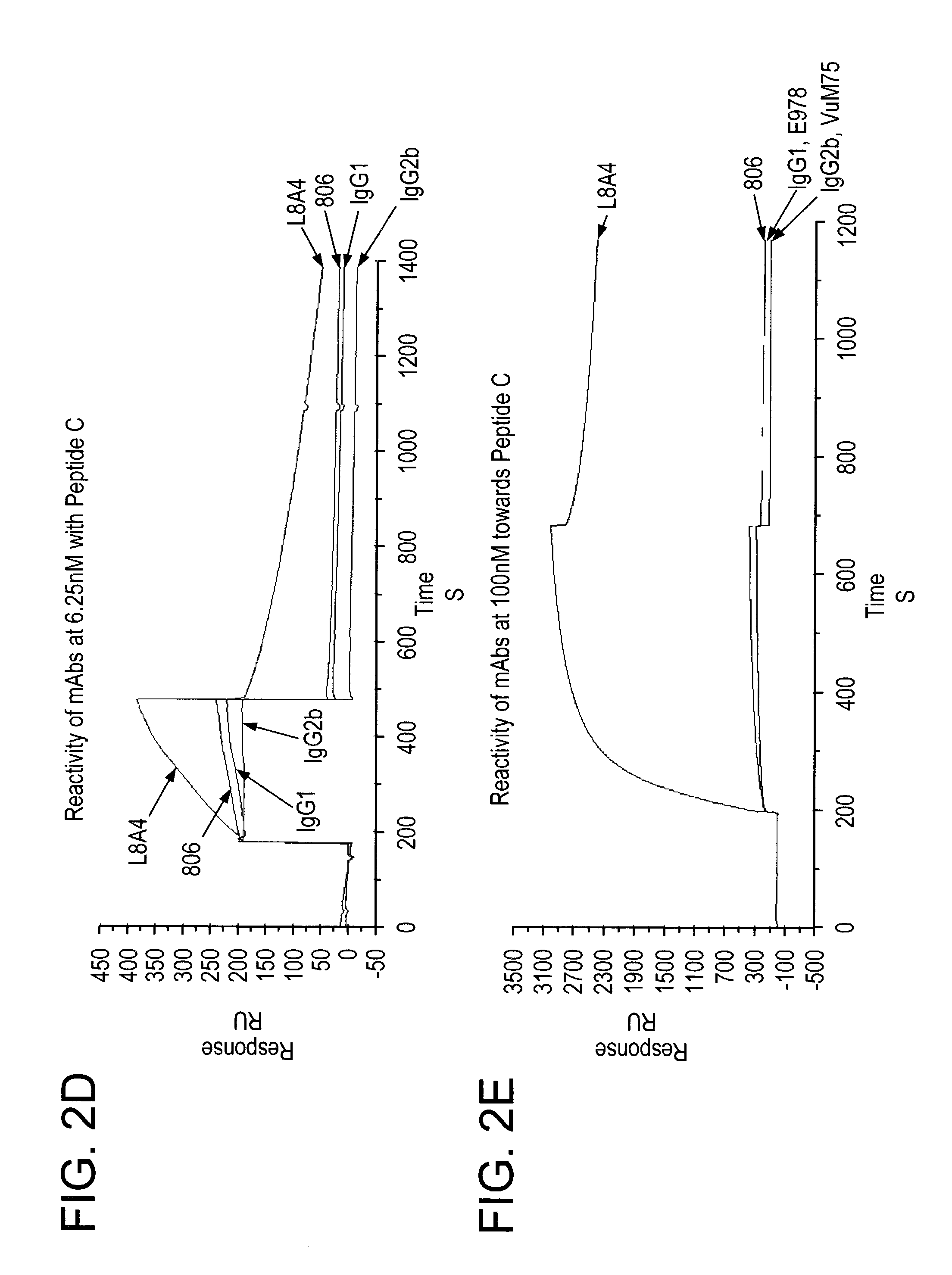Specific binding proteins and uses thereof
a technology of specific binding proteins and binding members, which is applied in the field of specific binding members, can solve the problems of limited use of these antibodies, poor prognosis of expression of egfr, and limitations of the range of applicability and efficacy reflected above, and achieves significant in vivo anti-tumor activity.
- Summary
- Abstract
- Description
- Claims
- Application Information
AI Technical Summary
Benefits of technology
Problems solved by technology
Method used
Image
Examples
example 1
Isolation of Antibodies
Materials
Cell Lines
[0294]For immunization and specificity analyses, several cell lines, native or transfected with either the normal, wild type or “wtEGFR” gene or the ΔEGFR gene carrying the Δ2-7 deletion mutation were used: Murine fibroblast cell line NR6, NR6ΔEGFR (transfected with ΔEGFR) and NR6wtEGFR (transfected with wtEGFR), human glioblastoma cell line U87MG (expressing low levels of endogenous wtEGFR), U87MGwtEGFR (transfected with wtEGFR), U87MGΔEGFR (transfected with ΔEGFR), and human squamous cell carcinoma cell line A431 (expressing high levels of wtEGFR)[38]. Cell lines and transfections were described previously (Nishikawa R., et al. (1994) Proc. Natl. Acad. Sci. 91(16):7727-7731).
[0295]The U87MG astrocytoma cell line (20), which endogenously expresses low levels of the wt EGFR, was infected with a retrovirus containing the de2-7 EGFR to produce the U87MG.Δ2-7 cell line (10). The transfected cell line U87MG.wtEGFR was produced as described in Na...
example 2
Binding of Antibodies to Cell Lines by FACS
[0304]In order to determine the specificity of mAb 806, its binding to U87MG, U87MG.Δ2-7 and U87MG.wtEGFR cells was analyzed by flow activated cell sorting (FACS). Briefly, cells were labelled with the relevant antibody (10 μg / ml) followed by fluorescein-conjugated goat anti-mouse IgG (1:1100 dilution; Calbiochem San Diego, USA). FACS data was obtained on a Coulter Epics Elite ESP by observing a minimum of 5,000 events and analysed using EXPO (version 2) for Windows. An irrelevant IgG2b was included as an isotype control for mAb 806 and the 528 antibody was included as it recognizes both the de2-7 and wt EGFR.
[0305]Only the 528 antibody was able to stain the parental U87MG cell line (FIG. 1) consistent with previous reports demonstrating that these cells express the wt EGFR (Nishikawa et al, 1994). MAb 806 and DH8.3 had binding levels similar to the control antibody, clearly demonstrating that they are unable to bind the wt receptor (FIG. 1...
example 3
Binding of Antibodies in Assays
[0307]To further characterize the specificity of mAb 806 and the DH8.3 antibody, their binding was examined by ELISA. Two types of ELISA were used to determine the specificity of the antibodies. In the first assay, plates were coated with sEGFR (10 μg / ml in 0.1 M carbonate buffer pH 9.2) for 2 h and then blocked with 2% human serum albumin (HSA) in PBS. sEGFR is the recombinant extracellular domain (amino acids 1-621) of the wild type EGFR), and was produced as previously described (22). Antibodies were added to wells in triplicate at increasing concentration in 2% HSA in phosphate-buffered saline (PBS). Bound antibody was detected by horseradish peroxidase conjugated sheep anti-mouse IgG (Silenus, Melbourne, Australia) using ABTS (Sigma, Sydney, Australia) as a substrate and the absorbance measured at 405 nm.
[0308]Both mAb 806 and the 528 antibody displayed dose-dependent and saturating binding curves to immobilized wild type sEGFR (FIG. 2A). As the u...
PUM
 Login to View More
Login to View More Abstract
Description
Claims
Application Information
 Login to View More
Login to View More - R&D
- Intellectual Property
- Life Sciences
- Materials
- Tech Scout
- Unparalleled Data Quality
- Higher Quality Content
- 60% Fewer Hallucinations
Browse by: Latest US Patents, China's latest patents, Technical Efficacy Thesaurus, Application Domain, Technology Topic, Popular Technical Reports.
© 2025 PatSnap. All rights reserved.Legal|Privacy policy|Modern Slavery Act Transparency Statement|Sitemap|About US| Contact US: help@patsnap.com



